Spring 2020: Starting the Garden
- Handmade Bits and Bobs
- April 13, 2020
- Food Preservation / Gardening / Philosophy
- 0 Comments

These are strange days, indeed. All of us are grappling with our own version of quarantine. I think it’s the uncertainty about how this continues to unfold that creates a good deal of anxiety; if you know what’s coming, you can make mental adjustments and anticipate a plan of action but this is all a big question mark. I’m finding the ritual of starting this year’s garden particularly therapeutic in these times.
One of the interesting side effects of the pandemic is the reported upsurge in people ordering seeds to grow their own food. It appears that the unreliability of the food supply chain has grabbed people’s attention and, as I have felt myself, fed an increasing desire for self-reliance when it comes to this most basic need. Many of my usual seed companies are back-ordered for weeks on seeds and supplies.
Having a well-stocked pantry of dry goods (beans, grains, flours, etc.) and still an abundance of food preserved from last year’s garden—frozen, canned, and dried—there has been no need for a grocery store run over the past four weeks. As a bread baker, I always do big batches of baking so that, too, is in the freezer. When I neglect the zucchini in the garden and grow baseball-bat-sized produce, that goes into zucchini bread, also frozen for the winter. I sometimes fret that I get a titch too Little-House-on-the-Prairie in how I live, but am so grateful now that I do. As my friend Pat observed during a frustrating round of blanching and freezing from the garden, “Future Maria will be so happy.” Wise words indeed, and I use them as a mantra.

Seed Starting
There are several reasons that I start my own garden seeds rather than rely on purchased seedlings. Living in the northeastern US, I start getting itchy during the final months of winter (although we had a very mild season this year) and want to start playing in the dirt long before the garden is ready for it. There are also so many more varieties to choose from when growing from seeds. Many of the fruits and vegetables we have become accustomed to in the grocery stores are not selected for taste or nutrition but because they can be stored and transported easily. We have lost many delicious culinary possibilities in the narrowed focus of monocultures and big agricultural concerns. I try to grow a few new types of vegetables every year, many of them heirloom or historical.

There is also the total amazement at the transformation of a tiny seed, with the addition of sunlight, water, and the nutrients in the soil, to transform into pounds of food. I am in awe, every single time, that something this tiny unfolds into such a miracle.
So, as I do every year, I went about making up soil blocks and getting my first round of seeds started. You can read more about this process from previous years here. My kitchen worktable transforms into the seed-starting station under grow lights with heated germination mats under each tray. This year, however, disaster struck when I removed the plastic covers and, within a few hours, I had a goodly number of fried seedlings. Never has that happened before and, after a frantic consultation with a fellow seed-starting friend, the hypothesis settled on that the grow lights were too close and the heat from the bulbs took their toll on the tender shoots. I did lose all my Lacinato kale, half my Swiss chard, and crisped up some tomatoes. Also, as always, didn’t get germination on some seeds at all. I have replanted and tended, and most of the seedlings are coming along nicely.
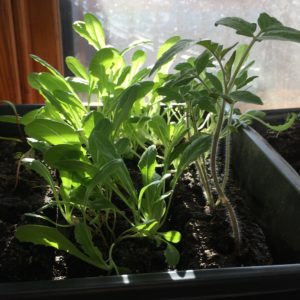
It’s also important to track what gets planted where from year to year. Not planting the same things in the same spot is really important to maintain soil health and discourage pests and disease. I don’t have a huge garden so it can be challenging to cram in what I want without duplicating the placement. And, since my memory is totally shot, I keep a chart from year to year to try to manage the rotations through the garden beds.
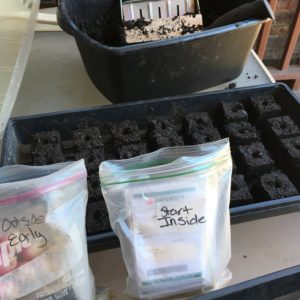
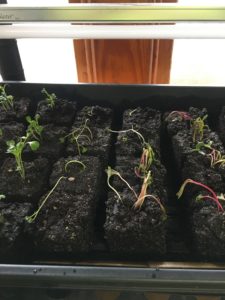
This is the first round of seeds: either plants like tomatoes, peppers, and eggplants that need quite a bit of a head start to accommodate my short growing season, or early vegetables like lettuce that like the cool of spring and can get in the ground fairly soon. I sow multiple seeds in each soil block and then thin them out once they get established. That way I can make determinations of which seedlings look the hardiest and cull out the other ones. Some of the thinnings, like lettuce, make for a delicate little salad. Another round of seeds will be started later, for the warm-weather loving cucumbers, zucchini, and herbs.

Getting Outside
Another enormous benefit to me is getting outside. With the need to stay home these days, it has felt even more imperative to carve out time outside. As always with spring in these climes, there’s no telling what weather will be served up as we transition out of winter to spring. On March 23rd, it was a warm sunshiny day, so I took advantage of it and got some garden clean-up done and got my peas planted. They particularly like cool temperatures and are always the first seeds in the ground for me. The next day, my garden was covered with four inches of snow. Spring snow is sometimes referred to as “poor man’s fertilizer,” as the snow contains nutrients that can easily be transferred to the unfrozen spring soil. Or at least that’s the theory. Typical spring weather.


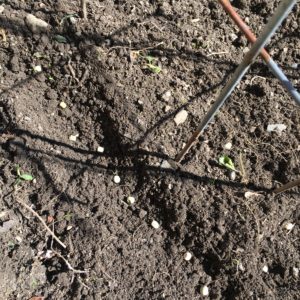
Nonetheless, over the past month my peas have sprouted, my few perennials (chives, lovage, sorrel, and lavender) have awoken and my raspberry and blueberry bushes are coming to life. I planted scallions last year and got nary a one; I guess they were waiting for this year, and I have several that have already sprouted! Last year I let my raspberries run wild so that I could understand how they grow and learned that I will be much more ruthless this year. (Read more about the raspberry project here.) Spent some time taming that bed, creating more structure to corral the canes, and have been delighted to see them really leaf out.
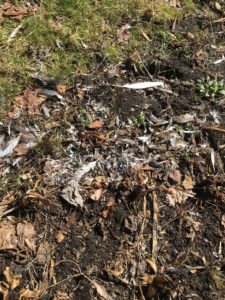

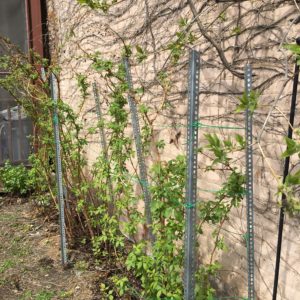
I spent half the day out in the garden yesterday, April 12th, getting to more spring cleanup and putting some root vegetable seeds in the ground: three varieties of radishes, beets, and turnips. (Recently, David Lebovitz, the former pastry chef at Chez Panisse and blogger now living in France, shared a recipe for Radish Leaf Soup that I am determined to try!) I emptied one of my two compost bins around the berry bushes and moved the full one to a corner of the garden to continue cooking, while freeing up the second one to begin filling again. I know gardening isn’t everybody’s thing but, for me, it is a tonic to body and soul to be back in the dirt. There is reassurance in the wheel of nature continuing to turn as it always has. Exactly what I need in these trying times.
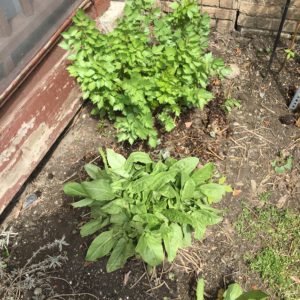
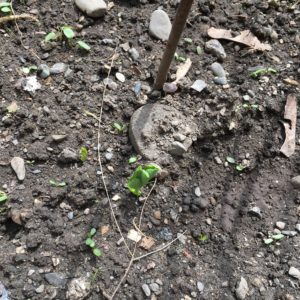
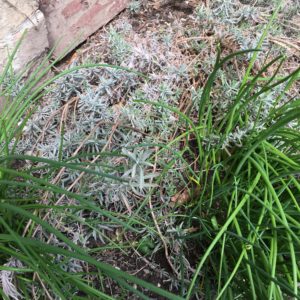
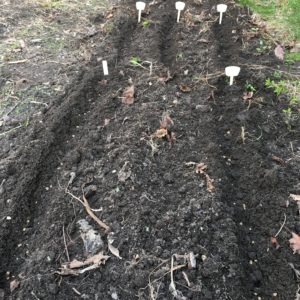
P.S.
P.S. Gardening isn’t all that I’ve been doing during this imposed home time. Check out what else has been keeping me occupied on both my Books and More Bits and Bobs pages. . You can also keep up with me on Instagram.